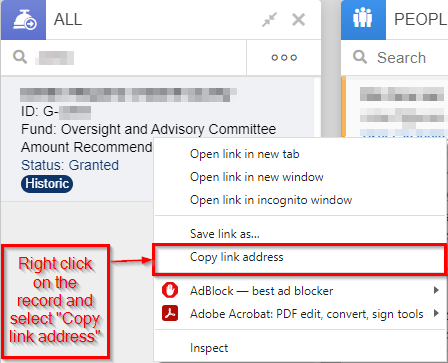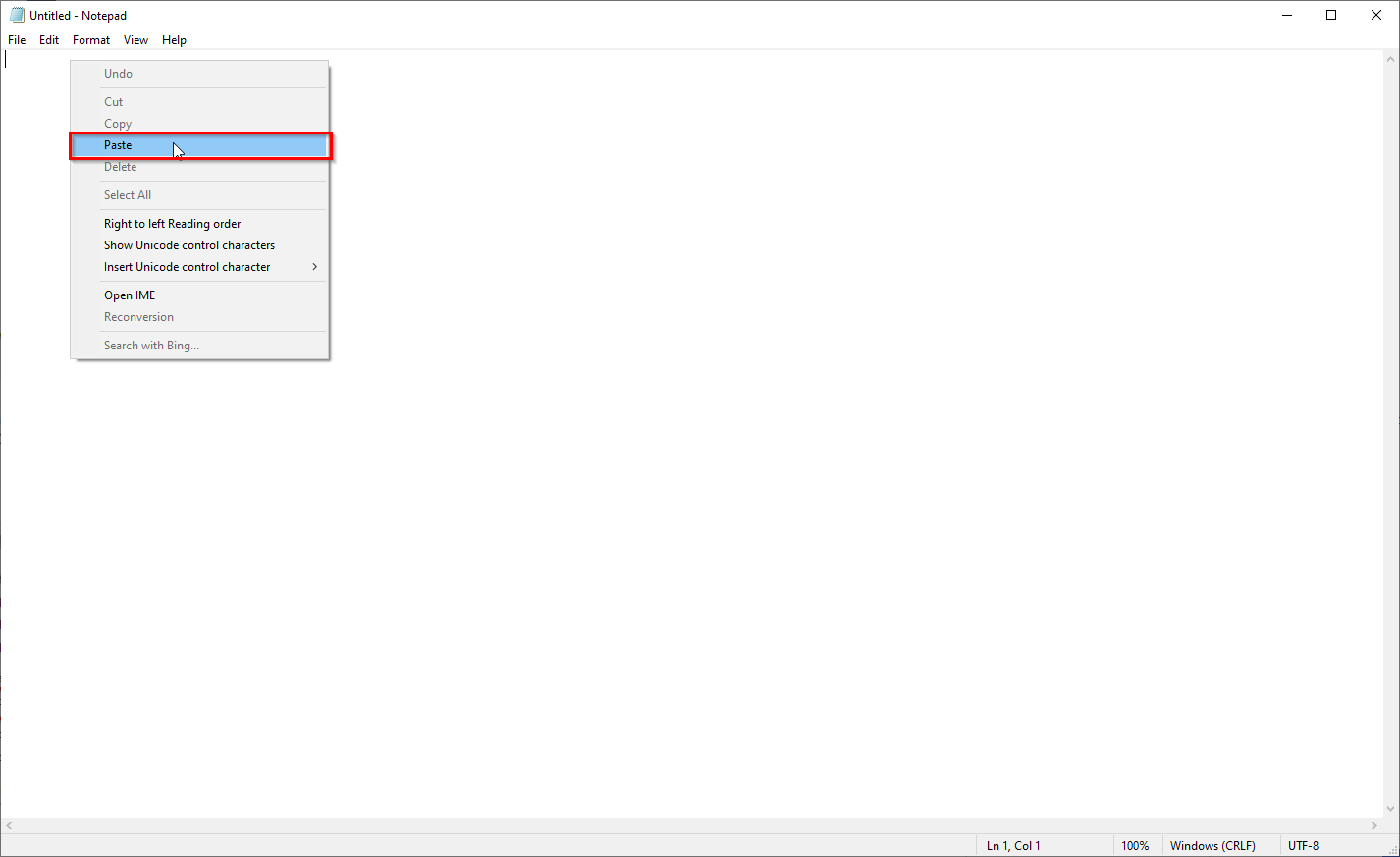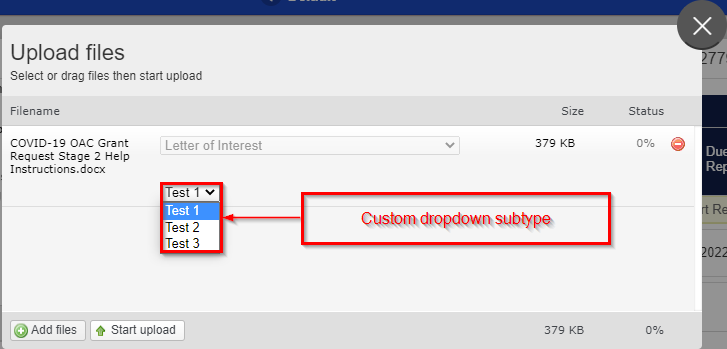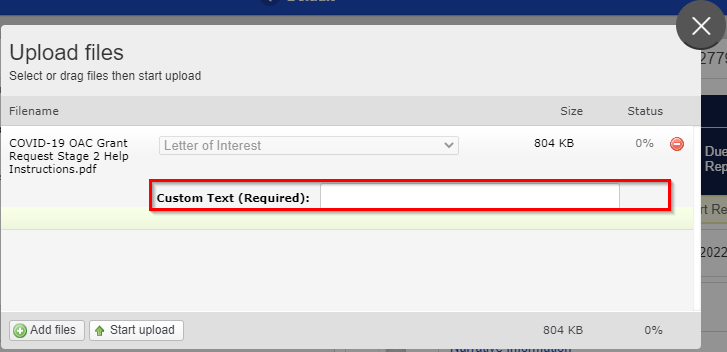...
- The "Alert Enabled?" checkbox must be checked (otherwise the email will not generate)
- An internal name for the email must be supplied (needed just to save the email alert)
- A subject line for the email must be entered (otherwise email will have 'No Subject'; emails that lack subjects sometimes gets automatically moved to the Spam folder, so this is not desired)
- Text for the body of the email must be entered (otherwise what is the point of this email alert)
- At least one recipient must be specified (otherwise no one will receive the email)
- A trigger mechanism has to be supplied (otherwise the email will never be sent)
...
- Box # 1: Shows the Emails tab selected.
- Box # 2: Shows the Email that you currently have selected. You can tell which Email is currently selected NOT ONLY based off of the name (match name of Email with "Name" from box # 4), BUT ALSO from the slim green line that appears to the LEFT of the Email name.
- Box # 3: Shows two very important checkboxes that control whether or not (1) the email is active and (2) the email will send automatically and bypass the email queue.
- Alert Enabled Checkbox: Determines whether or not the Email alert is Enabled. If checked, the email is considered Enabled and can be sent. If NOT checked, then the email will not send even if the criteria are met.
- Automatically Send Checkbox: Determines whether or not the Email will go to the Email Queue when it 'triggers' (see the section below for email triggering). If NOT checked, when the email is triggered it will go to the Email Queue and will need to be manually pushed out of the queue by a user. If the checkbox IS checked, then, when triggered, the email will completely skip the email queue and be sent directly to the selected recipients.
- Box # 4: Shows the internal Name of the email alert. This can be changed at any time without breaking/impacting anything in the system (except for the name of this email alert as it appears in the list of email alerts for the selected Record Type).
- Box # 5: Shows the Request Type. This is only an option on the Grant Requests Record Type; it allows you to choose from Requests (Applications), Granted Requests (Awarded Grants), or Both (Applications and Fully Awarded Grants).
- Box # 6: Shows where you can edit the Subject Line of the email message. Note: This is the ONLY part of the email message where you CANNOT pull in dynamic information (i.e. Project Title from a Grant Application). Therefore, subject lines should be as generic as possible.
- Box # 7: Shows where the text for the Body of the Email is configured. To edit the text here, click on the button "Edit Text." Editing Email body text is the same as editing text in Forms. See "Editing Text" for more information.
- Box # 8: Shows the Scroll Bar that you can and should use to view more email settings. One needs to scroll down in order to see the additional settings.
- Box # 9: Shows where you can delete this email alert.
- Box # 10: Shows where you can save your work on the email alert. Note: You need to Save this record after making any changes in order for those changes to be applied; if you close this page/switch to another after making changes without previously clicking on the Save button, all unsaved changes will be discarded.
- Box # 11: Shows where you can create a New Email Alert for this given Record Type (in this screenshot, Grant Requests).
...
- Box # 1: Show the Test Alert box. This allows you to enter in an internal ID for a record of the same Record Type as the email alert.
- To obtain an ID for testing, right-click on a record in the system that has the same Record Type as the email alert (in this example, we're looking at Grant Request emails so the record here is a Grant Request – in this specific case a full Grant). When you right-click a record, a small menu comes up with options such as "Open link in new tab." Select the option "Copy link address:"
- Once you've done so, open up a Notepad page (or a Notepad++ page if you use that application). In your Notepad page, paste the link that you just copied:
- The link should look something like the screenshot found below. The number after the last forward slash ("/") (also highlighted in the screenshot below) represent the Internal ID that you can post into this window to test the alert. Copy the numbers after the last forward slash.
- Now to generate the text test alert. Paste the numbers obtained from the last step in the "model id:" field, then click on the button that says "Generate Test Alert."
- Clicking "Generate Test Alert" will result in a new tab opening up on your internet browser with the text of the email as it would be configured for the record supplied in "model id:" – see the screenshot below to see what that test alert looks like:
- To obtain an ID for testing, right-click on a record in the system that has the same Record Type as the email alert (in this example, we're looking at Grant Request emails so the record here is a Grant Request – in this specific case a full Grant). When you right-click a record, a small menu comes up with options such as "Open link in new tab." Select the option "Copy link address:"
- Box # 2: Shows the "Switch to Advanced Filters" toggle option. Like with Cards, emails can be set up with Filters. These Filters work in conjunction with the Trigger settings to determine if the record in question merits the Email Alert. Basically, in order for a record to qualify for the email alert, it has to qualify for both the trigger settings AS WELL AS the filters. Switching to Advanced filters allows for the "Advanced Search" window to appear and then allows you to use Advanced Filters criteria and logic (i.e. using nested groupings, switching between "AND"/"OR" logic, and toggling "NOT" clauses).
- Box # 3: Shows the Basic Filters that are available for selection. These filters will still appear when advanced filters are being used, but both should NOT be used in conjunction. Use EITHER the basic filters OR the advanced filters, not both.
...
- Box # 1: Shows the Documents tab currently selected.
- Box # 2: Shows the Document that you currently have selected. You can tell which Document is currently selected NOT ONLY based off of the name (match name of Document with "Name" from box # 3), BUT ALSO from the slim green line that appears to the LEFT of the Document name.
- Box # 3: Shows the internal Name of the document. This can be changed at any time without breaking/impacting anything in the system (except for the name of this document as it appears to both internal and external users).
- Box # 4: Shows the Abbreviation. This is used in a very small number of screens, and is generally left blank by the WPP.
- Box # 5: Shows the Type of Recordthat the document type is linked to. This allows you to move a Document Type from one Record Type to another if needed/desired. However, it is generally recommended against moving a document this was between Record Types as it can cause confusion for admins who attempt to edit the document in the old Record Type but don't see the document there anymore (because it moved to a different record type). If not moved correctly, it can also cause issues with any previous uploads to that same document type. In general, it's preferable to simply "Retire" the old document and to create the newly desired document type under the correct Record Type (this is safer).
- Box # 6: Shows the Model Theme (AKA Form Type) that the document can be applied to. If left blank, the Document Type can be used for every form under this record type. Otherwise, it will only be accessible on the form selected in this field.
- Box # 7: Shows the Sub type config, which allows you to force a user uploading a document to add in a type of date field when uploading the document selected. The two options are:
- Date: Forces the user to enter in a full date when uploading the document, i.e. 1/1/2022.
- Year: Forces the user to enter in a calendar year when uploading the document, i.e. 2022.
- Box # 8: Shows three checkboxes that have an impact on document upload functionality. They are:
- Display Dropdown Subtype: Allows the user to enter in a custom list of dropdown values for the user uploading the document to select from. Similar to the the Sub type config, but the values are custom and NOT solely year or date-based.
- Example of what a custom Dropdown Subtype looks like in the system:
- Display custom text: When checked, forces the user uploading the selected document to enter in Custom Text with their uploaded document. No other configuration is available with this settings.
- Example of what "Display custom text" looks like in the system:
- Required: Checking this box will always make this document required on any form it is added to. It is generally recommended against checking this box as documents can be made mandatory on the particular form it is added to as well. Generally, we prefer to make the document required on the Form so that, if needed, we can always have the document be an optional upload on a different form (again, if it is required on the Document level then it will be Required regardless of the Form that it is on, so you'll never have the possibility of making it optional).
- Display Dropdown Subtype: Allows the user to enter in a custom list of dropdown values for the user uploading the document to select from. Similar to the the Sub type config, but the values are custom and NOT solely year or date-based.
- Box # 9: Displays the Permissions dropdown menu for this particular document type. See below for the options for the Permissions menu.
- Screenshot of the options available in this dropdown menu:
- Description of those Permissions:
- External users only see documents uploaded by other external users: As the name implies, external users (non-employees) only see this document when it is uploaded by other external users; non-employees will NOT see the document if it is uploaded by an employee.
- External users see and delete all documents of this type: External users are able to see all documents of this type (regardless of how it was uploaded) and can delete all documents of this type.
- External users see all documents of this type but can only delete their own: External users are able to see all documents of this type (regardless of how it was uploaded) and can delete the document of this type ONLY if they themselves uploaded it. This is the recommended permissions type for all documents.
- External users never see documents of this type: As the name implies, external users will never be able to see a document with these permissions.
- Document can not be edited or deleted: Self-explanatory.
- Only Grantees & Internal Users see documents of this type (not reviewers): Employees and Grantees can see this document type; reviewers cannot.
- Only Reviewers & Internal Users see documents of this type (not grantees): Employees and Reviewers can see this document type; grantees cannot.
- Box # 10: Shows the Required State dropdown menu which contains a list of all of the available statuses for the Record Type that this document is currently in. This will make it so that this document is always required at that specific status. As with the Required checkbox above, it is generally recommended to make documents required on the specific Form that they're on and to leave this field blank.
- Box # 11: Shows the form's default Doc label. The Doc Label pairs with the Doc label on the Documents component as added to a form. Essentially, a Document will, once uploaded, display in the Document Uploads component with the same Doc label as the document itself. The Doc label for a document can be changed on the Form level as well, so it's generally recommended against changing the label here and instead recommended to change the label on the Form level.
- Box # 12: Shows two checkboxes that store important functionality for this document:
- Upload Only Once: Forces the user uploading the document to only upload one version of this document (i.e. not able to select 4 different files to count as my 1 'document upload'). Additionally, it prevents the usage of the use of the "Add New Version of Document" button.
- Example of the 'Upload New Version of Document' button:
- Retired: Checking this box will make the system consider this document to be Retired, i.e. no longer in use, but still existing in the system. This allows for old documents uploaded with this type to stay around in the system, but prevents users from adding this document to new Forms in the future.
- Upload Only Once: Forces the user uploading the document to only upload one version of this document (i.e. not able to select 4 different files to count as my 1 'document upload'). Additionally, it prevents the usage of the use of the "Add New Version of Document" button.
- Box # 13: Shows where you can Delete the document in question. It's recommended against doing this unless the Document Type was created in error and no documents have been uploaded with that type. In general, it's preferable to Retire an old Document Type than it is to delete it.
- Box # 14: Shows where you can save your work on the Document Type. Note: You need to Save this record after making any changes in order for those changes to be applied; if you close this page/switch to another after making changes without previously clicking on the Save button, all unsaved changes will be discarded.
- Box # 15: Shows where you can Create a New Document Type within this Record Type.
API Alerts
The WPP does not currently use API Alerts; however, Fluxx has a good article regarding API Alerts and the API Queue that is linked out below.
Link to Fluxx article: https://fluxxdev.atlassian.net/servicedesk/customer/portal/1/article/1795884009?src=1177191611








